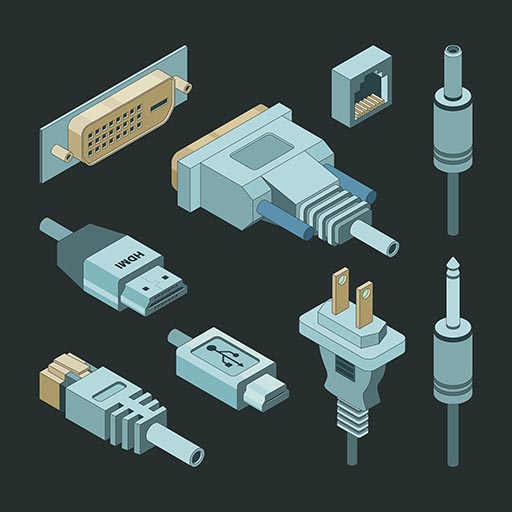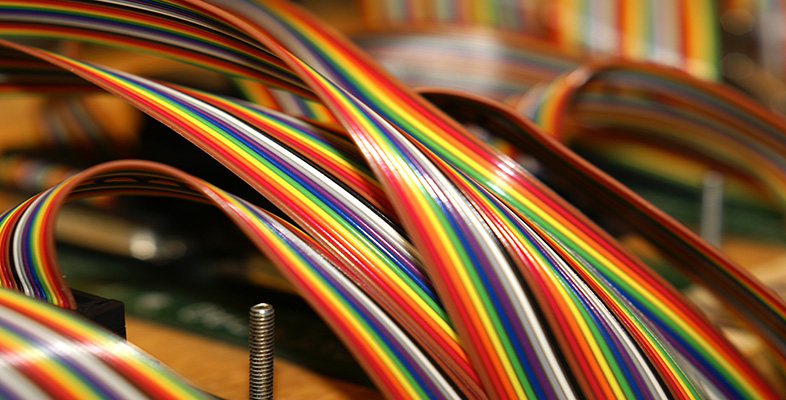6 Communication links
6.1 Networks
Next I'll be looking more closely at the 'network' block in Figure 8, and in particular at the links that must be present before communication can take place. I'll introduce you to just a few of the forms that these links can take; links may be physical ones, such as cables, or they may be wireless, such as radio links. I'll also discuss how we measure the capacity of a link for carrying messages.
Physical cables can provide a path for conveying data between two points. A common example is the telephone wires that are used to connect the 'landline' telephones in people's homes to the nearest telephone exchange. Cables are also used to carry television and often radio signals to the homes of cable TV subscribers. Fibre-optic cables are used to interconnect telephone exchanges. Cables are also used to connect computers together into various kinds of network.
There are two forms of wireless link in common use: radio links and infrared. Millions of people around the world now use mobile phones, and this involves radio links. You may also have come across 'Bluetooth' and 'WiFi' radio links in connection with computers. Bluetooth® is used for short-range wireless links between devices, for example to connect a computer and a printer. A WiFi link, with its slightly longer range, might be used to connect a WiFi-enabled notebook computer to a WiFi 'hotspot' (in a cafe or other public place), which provides a link to the internet.
The other sort of link is an infrared link, which you will have come across when using the remote control for your television set. Infrared can also provide a communications link between computers and devices such as printers. An important difference between wireless links and infrared is that an infrared link must be along a line of sight (for example, the remote control has to be pointed at the television), whereas a radio link need not be.
It is very important that a communication link has the capacity to cope with the messages it has to convey – that is, that it can convey the messages as quickly as they are arriving from the transmitter. The ability of a communication link to convey data is measured by a quantity known as its 'bandwidth'. But what is bandwidth? To answer that question I need to introduce you to the form in which data is normally conveyed in today's ICT systems. This form is a series of pulses – that is, data is conveyed by sending streams of pulses from one end of a communication link to another.

